







Diving German WW1 minelaying submarine UC-42.
Sidescan sonar image of Wreck of 1692 (to be confirmed) discovered by Carroll O'Donoghue, owner/operator of HARPY, in 2015.
A selection of our underwater survey hardware. We're ready when you need us.
Wreck-diving off the Old Head of Kinsale
Commercial Divers working on undersea pipes outside Kinsale harbour.
Recovering Diver after ascent from Lusitania wreck.
Sunset in Kinsale, pictured from the quays.
The Granuaile is contracted quite often to take on tasks such as the recovery or ships, search for missing persons, towing and lifting operations. All this onto her usual role of servicing lights and lighthouses around the coast of Ireland and also the UK.
In this particular case she is photographed in he role as primary survey vessel for a two hour documentary on the Lusitania which is to be aired on the National Geographic channel in 2012. Kinsale Angling's contractual arrangements prevent discussion of the project so a limited number of photographs are included here.
There is a connection between the Lusitania and Granuaile - Albert Arthur Bestic. This great man of the sea was a 24 year old Junior Third Officer on Lusitania on that fateful day. He commanded one of the ship's collapsible boats and reportedly rescued 12 persons from the water. In later life he was to become captain within Irish Lights. As acting commander he was again lucky to survive the Luftwaffe bombing of the Irish Lights vessel ss ISOLDA which claimed 6 lives and the vessel on the 19/December/1940 off the SE coast. As chief-officer aboard the Orphir, he was involved the the Argonaut Corp. search for the Lusitania wreck - which was eventually successful.Turning to book and article writings when ill-health cut short his first career, he wrote also on the Light Expedition of the Lusitania. His book "Kicking Canvas" of his sea apprenticeship aboard the 3-masted windjammer "Denbigh Castle" is highly recommended. He died 20/December/1962 in Bray, Co.Dublin.
Many thanks to Capt. Dermot Gray for allowing me access to the ship and for so generously giving me a guided tour of her.
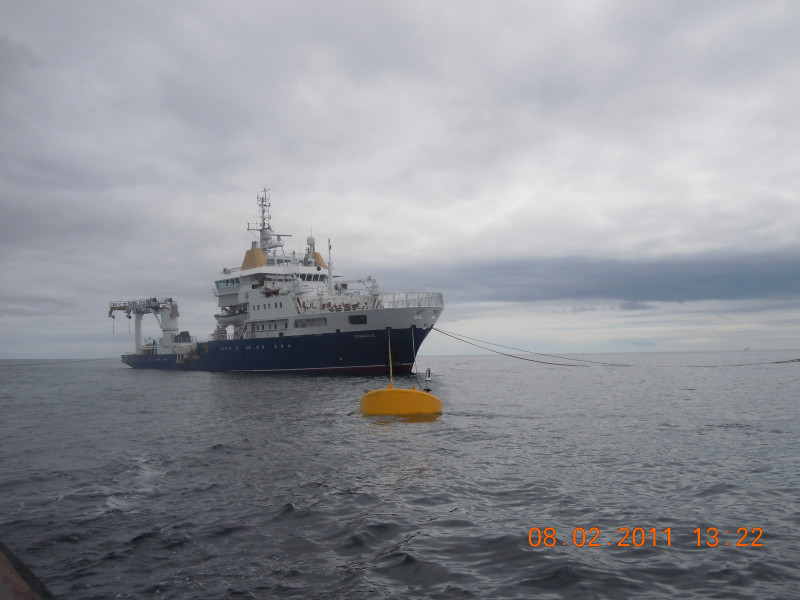
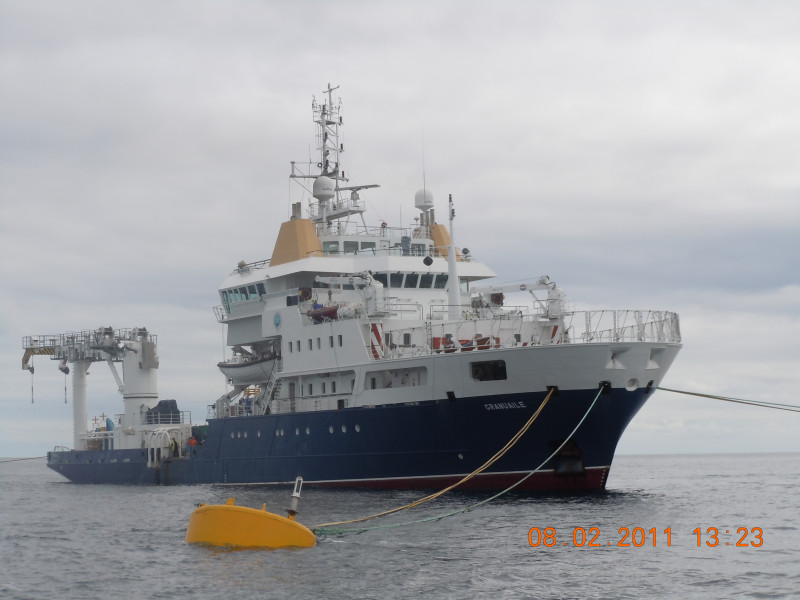
A quiet moment during the operations.
There is much to be seen in this photograph. The "newt-suit" is the yellow robot-like "creature" on deck - an aluminium jointed suit containing a CCR rebreather. Inside an operator can operate at great depths but internally at one athomosphre pressure (or one bar). The suit was designed and built by Phil Nuytten of Nuytco Ltd - hence the name). It is powered from the surface and controlled by both the encased operater and crew ship-side.
Beside this is the red 2-man submarine. More details to follow. Next to the submarine is a small ROV (robotically operated vehicle). The scale of these machines is interesting. The ROV is so small it is difficult to see on the gunnel with 3 crew inspecting it. Small it is, but very useful too - such is the speed of progress in the area of underwater technology
The weather was best on the first day on site. A gentle rolling sea slowly rolls both HARPY and GRANUAILE.
Two-man submarine clearly visible.
Passing Old Head outbound.
Captain Dermot Gray on the bridge of Granuaile. His father was a captain of an earlier Irish Lights vessel before him and lived in Dun Laoghaire. Dermot was very generous with his time in giving me a tour of the ship - she is, quite literally, spotless and very much at the pinnacle of current technology.
A quiet moment during the operations.
There is much to be seen in this photograph. The "newt-suit" is the yellow robot-like "creature" on deck - an aluminium jointed suit containing a CCR rebreather. Inside an operator can operate at great depths but internally at one athomosphre pressure (or one bar). The suit was designed and built by Phil Nuytten of Nuytco Ltd - hence the name). It is powered from the surface and controlled by both the encased operater and crew ship-side.
Beside this is the red 2-man submarine. More details to follow. Next to the submarine is a small ROV (robotically operated vehicle). The scale of these machines is interesting. The ROV is so small it is difficult to see on the gunnel with 3 crew inspecting it. Small it is, but very useful too - such is the speed of progress in the area of underwater technology
The weather was best on the first day on site. A gentle rolling sea slowly rolls both HARPY and GRANUAILE.
Two-man submarine clearly visible.
Passing Old Head outbound.
Captain Dermot Gray on the bridge of Granuaile. His father was a captain of an earlier Irish Lights vessel before him and lived in Dun Laoghaire. Dermot was very generous with his time in giving me a tour of the ship - she is, quite literally, spotless and very much at the pinnacle of current technology.
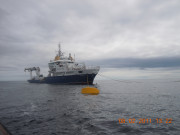
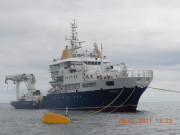

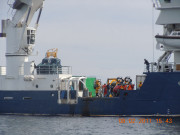
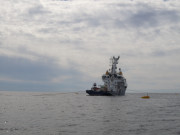
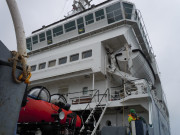
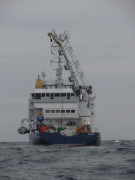
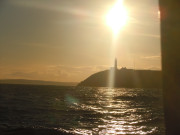
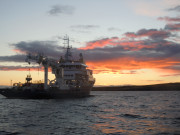
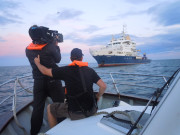
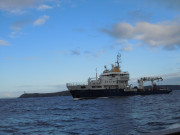
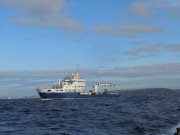
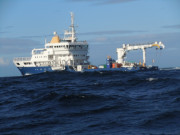
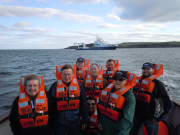
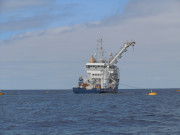
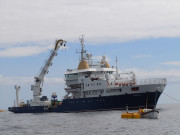
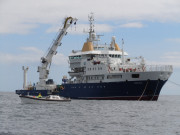
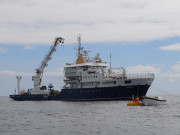
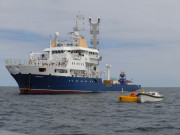
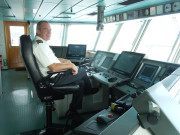
|
|
|
|